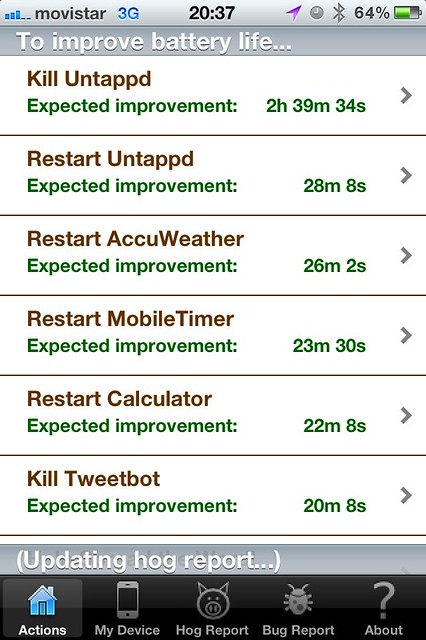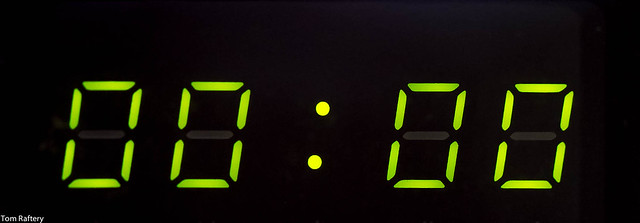
The World Bank issued a report yesterday showing that the number of mobile phone subscriptions in use worldwide, both pre-paid and post-paid, has now reached over 6 billion.
The report went on to reveal that more than 30 billion mobile applications, or “apps,” were downloaded in 2011 alone – these apps extend the capabilities of phones, for instance to become mobile wallets, navigational aids or price comparison tools. However the apps also have a cost associated with their use – they drain the phone’s battery.
Some of these apps are energy hogs – they require a lot of energy to run, and so they drain the phone’s battery quickly (maybe they are legitimately using the camera, the GPS radio, and the 3G network simultaneously). Other apps have bugs in them whereby they may not properly close out battery use after a particular function and they continue to drain the battery. Until now, there has been no way to identify which apps were the ones draining your battery’s charge.
I have written a couple of times here before wondering why there was no energy management app for smart phones. Now there is – Carat.
Carat has been developed by a very small team at the Algorithms, Machines, and People Laboratory (AMP Lab) in the Electrical Engineering and Computer Sciences (EECS) Department at UC Berkeley, in collaboration with the Department of Computer Science at the University of Helsinki.
The app is free and available for both the iOS and Android platforms. And the client-side code has been uploaded to Github, where anyone can download it, and if they have the development chops, potentially fix any issues they find, or even improve on the app.
As every Smartphone owner knows, battery life is a massive problem. Carat discovered just how big a problem when TechCrunch wrote a piece about the app a few weeks ago. Carat had estimated that they’d pick up an extra 10,000 users as a result of the article. Instead 250,000 people installed the app on their phones and Carat had to scramble to deal with the massive, influx of data.
As can be seen from the image above, Carat gives you advice on ways to get longer life from the battery in your smartphone by identifying Battery Hogs (apps that use a lot of energy), apps with energy bugs and advising on how much extra battery life you will save by re-starting or killing the app.
Carat also reports your J-Score:

The J-Score is “the percentile battery life you see relative to all other devices being measured by Carat”, so the J-Score of 54 reported for my phone means my expected battery life is better than 54% of Carat’s users.
One thing to be aware of is that because Carat needs a certain threshold of application usage before it can report accurately on your apps, it typically takes a weeks usage before it starts advising you on how to get better battery life for your device.
Speaking to Carat developer Adam Oliner last week he informed me that some of the next steps for the app will be to publish api’s so that app developers will have better access to the energy consumption info of their applications.
What is interesting about this app is that it was developed as a research project, and not by one of the Smartphone Endpoint Management providers. You’d have thought saving their customers money and reducing their emissions (through using less energy), while keeping their employees more productive (by prolonging the battery life of their smartphones) would have been a no-brainer.
Perhaps, now that it has been shown that this is possible, we’ll see more of these types of apps emerge.
Image credit Tom Raftery
Follow @TomRaftery


